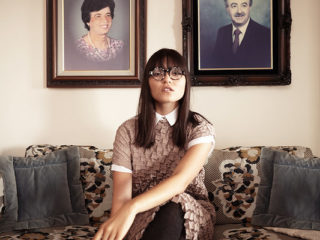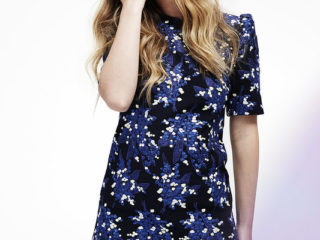A few years ago, I decided to stop taping museum postcards of famous artworks on my wall and invest in artists who were creating work in the here and now. When I used to hear the words “art collecting,” I would immediately think of the secretive deals done behind gallery doors or the multi-million dollar pieces up for sale at Sotheby’s Auction House.
While I do wish that all of art history’s most prized art lived in museums so that they may be appreciated and cherished by all, there is something truly special about investing in art that you love. Curating a personal collection of your own—a collection that gives life to your space, that speaks to you and awakens your mind and heart—can help to tell your life story.
There are now many accessible and affordable ways to build your own art collection. Here are some tips to help you get started:
Determine your taste.
If you’re unsure about where to start, think about where the art will live. When placed strategically throughout the spaces we inhabit, art can play an integral role in interior design.
For example, in a home office setting, you may want to find a piece that has an energizing effect, something that awakens your eyes when you gaze at it. Alternatively, you may want something quite calming to look at if you have a hard time focusing your energy.
What feeling do you want your space to embody? What piece will help convey that feeling? Overall, you have to enjoy looking at your collection. If you do, then it will undoubtedly find a proper place in your home.
Here are a few descriptive words to consider that may prompt your search:
- Abstract
- Minimal
- Vibrant
- Neutral
- Soft
- Landscapes
- Loud
Next, think about which medium might suit you best:
- Painting
- Sculpture
- Photograph
- Mixed media
- Etching
- Limited edition print
Find your piece.
Buying a piece of art can be a thrilling, yet daunting, task. Just like any purchase, it helps to take a step back and discern what exactly draws you to the piece at a first glance and whether or not it would find a meaningful and long-term place in your everyday life.
Discern what exactly draws you to the piece at a first glance and whether or not it would find a meaningful and long-term place in your everyday life.
Online Platforms
Thankfully, visiting galleries isn’t the only way to browse a selection of art. You can do a bit of exploration before committing to a specific piece. Visit websites like Artsy, Artspace, Saatchi Art, Tappan Collective, Etsy, Artfinder, Affordable Art Fair or Lumas. They offer great options that cater to a much wider audience than most gallery settings.
You can even find online auctions, such as Art for Light, which donate all their proceeds to a specific cause. If you already have a budget, color palette or medium in mind, most of these online platforms have filter settings that you can adjust to your preferences. If not, take a look around. What immediately catches your eye?
Social Media
With the rise of social media, it is easier than ever to find a wide selection of the next generation of artists online. We can also get exclusive looks into their studios and creative processes—making a purchase significantly more exciting and intimate. When I scroll through Instagram, every other image seems to be artwork. I save pieces daily that I aspire to add to my collection in the future, as well as take note of any artists to keep an eye on.
Get to know the artist by reading about the intentions behind their work and practice. This will add yet another dimension of meaning to your investment. Many of these artists depend on sales and engagement in order to support themselves.
Get to know the artist by reading about the intentions behind their work and practice.
If you can’t make a purchase, then following and sharing their work is a cost-free way to advocate for them. It also allows you to keep an eye on any new pieces they create.
Local Art
If you enjoy a bit of a scavenger hunt, then try visiting your local antique shop or yard sale. There may even be a studio in your town or city dedicated to a local artist that you could pay a visit to. You never know what you might stumble across. Also, keep an eye out for any local artist or maker fairs in your community.
These may be the most unpredictable routes, but perhaps the most fun, as you may come across unexpected gems. It also gives you the chance to connect with the artist on a personal level.
Lastly, colleges and universities typically present graduate work at the end of their studies, and attending a graduate show is a great way to support and encourage budding artists. Some of the work is usually for sale, giving you a chance to invest directly into your local art community.
Do you have an art collection or a desire to start one? Where can you find art that fits your style and personal preference?
Image via Melody Joy McMunn, Darling Issue No. 23











